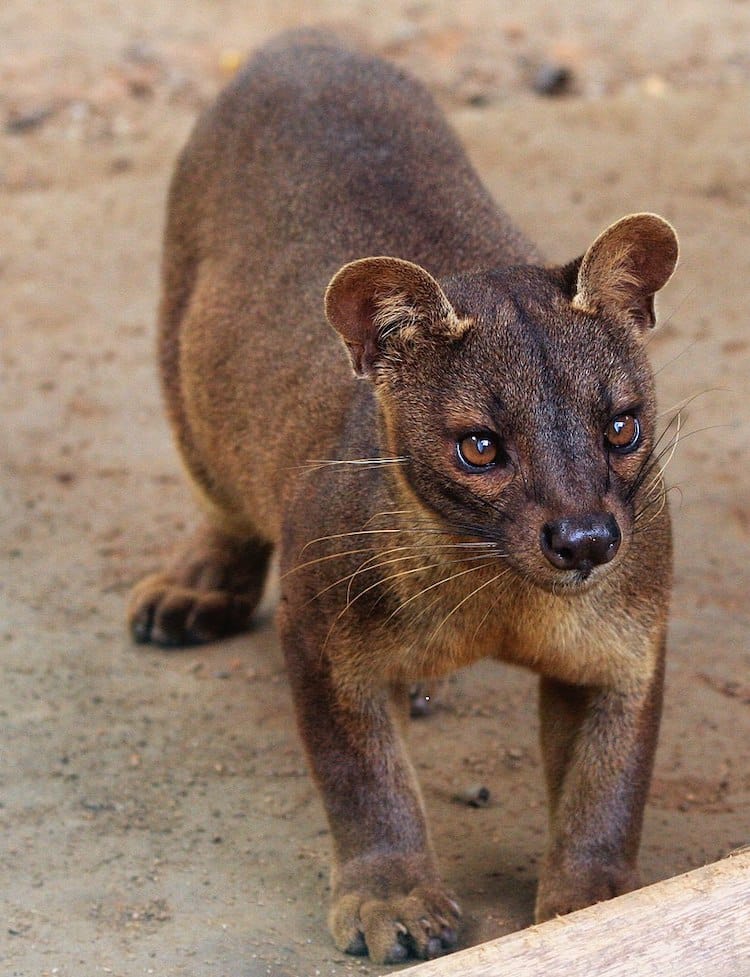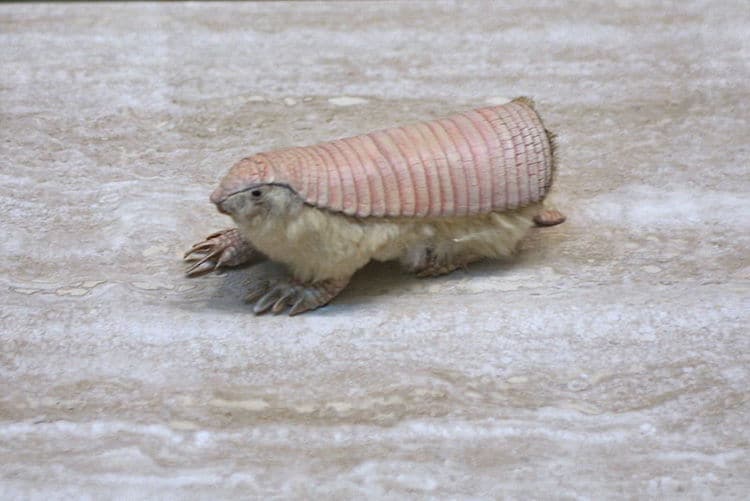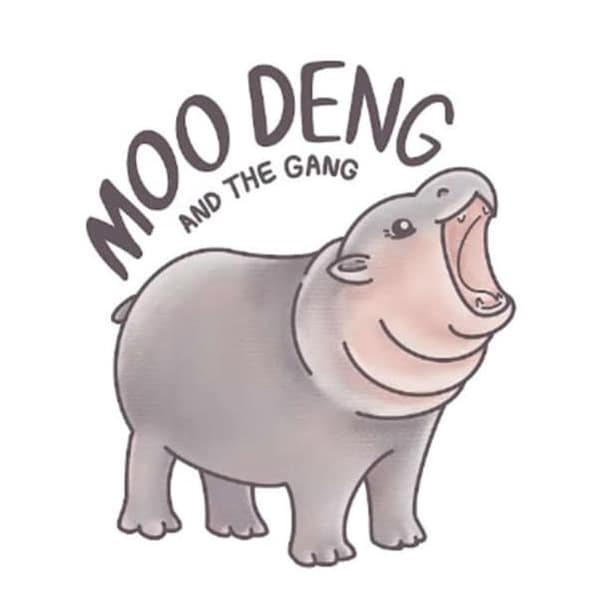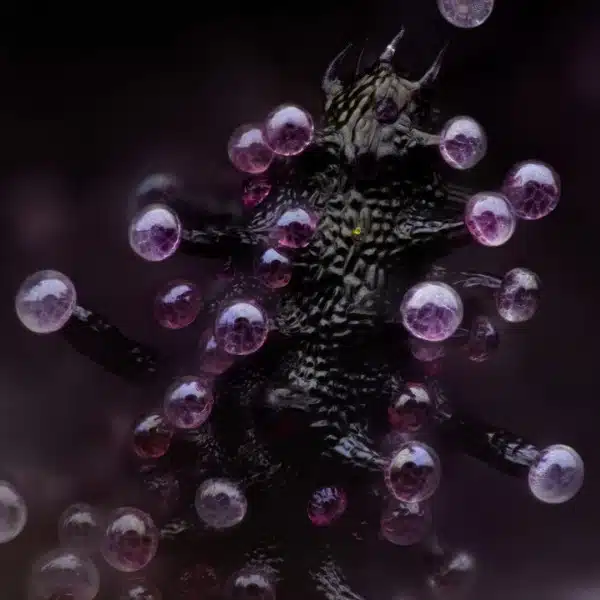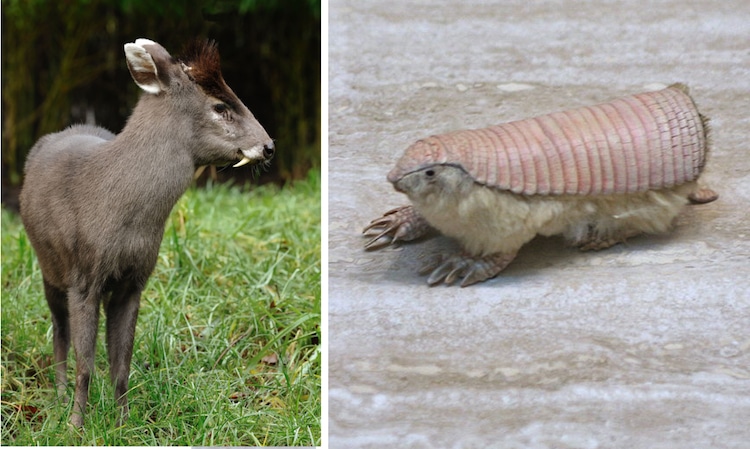
The world we live in is filled with exotic wildlife, and that means more than just lions and giraffes. There are a multitude of species that are lesser known to the general public and fascinating to learn more about. Redditor preggit decided to introduce a whole batch of these real animals that look like they've been Photoshopped. They come in all shapes and sizes and we couldn't help but share them.
One animal that preggit features is the maned wolf, which looks like it's a red fox that mated with a deer. But, that's not the case at all—it's actually its own type of mammal that just so happens to have a furry, lovable face with long, slender legs. Similarly, many of the weird animals below look like hybrid creatures from fantasy or folklore, making it hard to believe that they're out there in different parts of the world right now. Their appearances range from the adorable (see Raccoon Dog, below) to the absolutely terrifying (see Lamprey, below).
Whether you're familiar with most of these creatures or not, one thing is clear: there's great diversity in the animal kingdom that should be celebrated and preserved.
These weird animals are all real. How many of them did you already know?
Maned Wolf
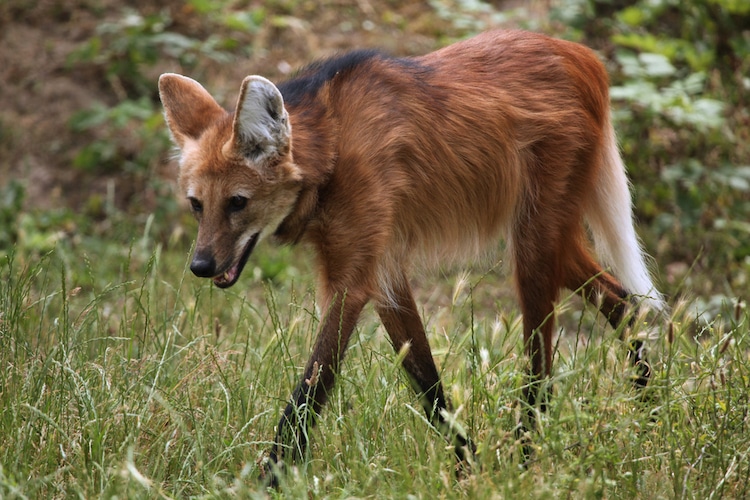
Photo: wrangel/Depositphotos
The maned wolf is the largest canid in South America, resembling a large fox with reddish fur. This mammal is found in open and semi-open habitats, especially grasslands with scattered bushes and trees throughout South America. The maned wolf is the tallest of the wild canids and its long legs are most likely an adaptation to the tall grasslands of its native habitat.
Fossa
The fossa is cat-like, carnivorous mammal that is endemic to Madagascar. The fossa is the largest mammalian carnivore on the island of Madagascar and has been compared to a small cougar. It has semi-retractable claws and flexible ankles that allow it to climb up and down trees head-first, and also support jumping from tree to tree.
Babirusa

Photo: Vitaly.R/Depositphotos
Babirusa, meaning “Hog-deer,” are members of the pig family found in Wallacea, or specifically the Indonesian islands of Sulawesi, Togian, Sula, and Buru. If a babirusa does not grind its tusks (achievable through regular activity), they will eventually keep growing so as to penetrate the animal's own skull.
Okapi

Photo: slowmotiongli/123RF
Okapi, which are endemic to the Democratic Republic of the Congo, are animals that sort of look like a Photoshop mashup. While they have the markings of a zebra, their chocolate-brown body looks more like a horse, and their faces look like a giraffe. The giraffe is actually closely related as okapi are the only other living member of the Giraffidae family. These solitary animals only come together to breed; and like giraffes, they are herbivores. Unfortunately, due to logging, hunting, and human settlement, okapi are currently listed as an endangered species.
Zebra Duiker
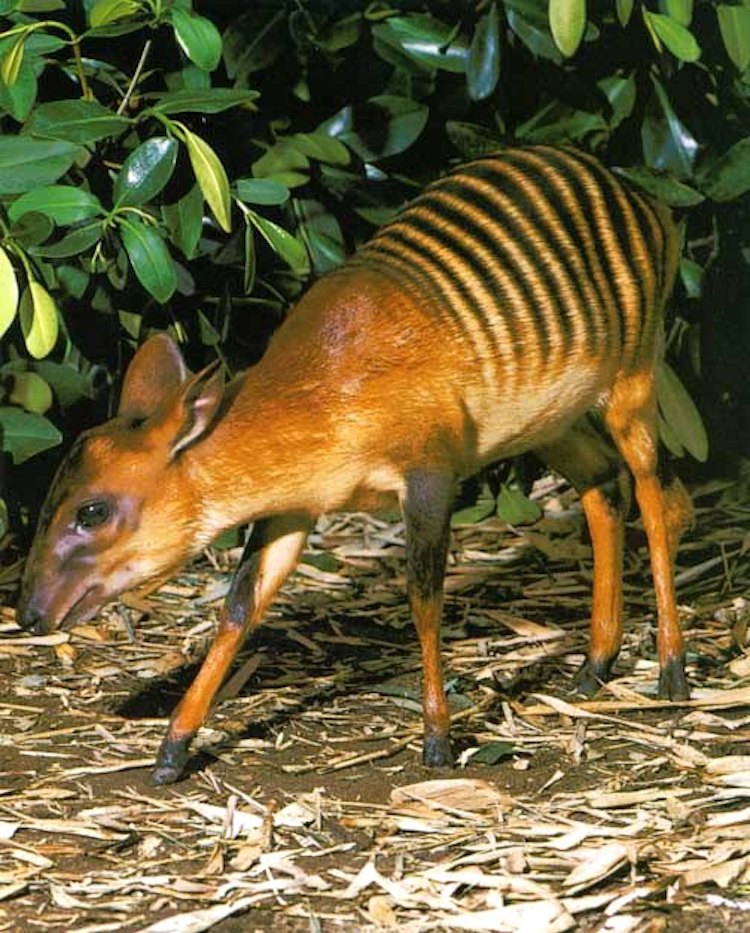
Photo: Kispál Attila via Wikimedia Commons (CC BY-SA 4.0)
The zebra duiker is a small antelope found in the Ivory Coast and other parts of Africa. They have gold or red-brown coats with distinctive zebra-like stripes (hence the name) Their prong-like horns are about 4.5 cm long in males, and half that in females. They live in lowland rainforests and mostly eat leaves and fruit.
Pink Fairy Armadillo
The pink fairy armadillo is approximately 3.5-4.5 inches long, excluding the tail, and is pale rose or pink in color. It has the ability to bury itself completely in a matter of seconds if frightened. It is a nocturnal animal and it burrows small holes near ant colonies in dry soil, and feeds mainly on ants and ant larvae near its burrow. It uses large front claws to agitate the sand, allowing it to almost swim through the ground like it is water. It is torpedo-shaped and has a shielded head and back.
Platypus

Photo: phototrip/Depositphotos
While you may have heard of a platypus, have you ever seen one? It's likely that you have, as these semiaquatic mammals live in eastern Australia and Tasmania. As the only member of its family and genus, the platypus is an unusual animal that mixes many features from other mammals. It has a duck-like bill, a broad, flat tail like a beaver, waterproof fur, and skin the texture of a mole. The platypus lays eggs, making it one of five mammal species to do so. If you do happen to come across one, be careful, as the males are also venomous. They have a spur on their hind foot that releases a venom that is quite painful, even to humans.
Amazonian Royal Flycatcher
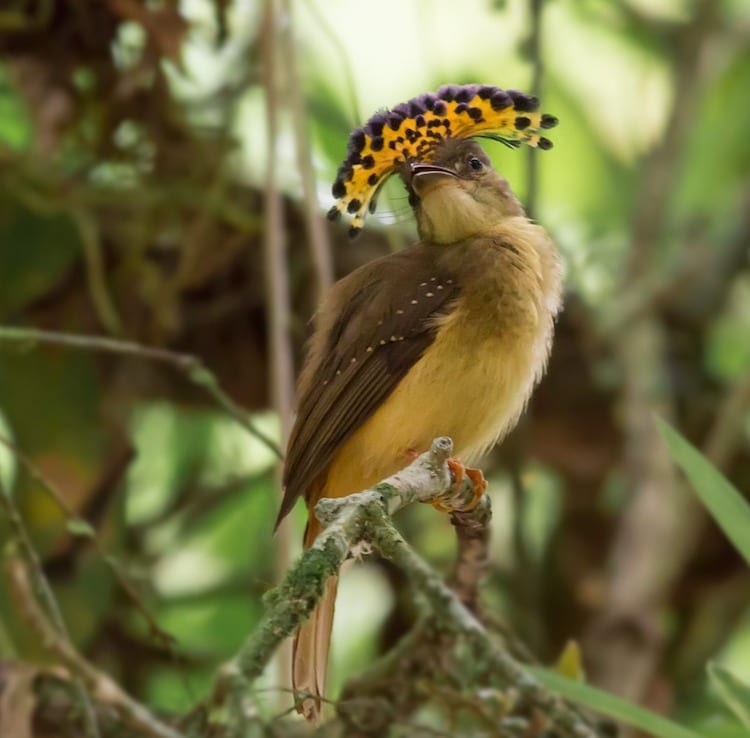
Photo: invisionphotos/123RF
The Amazonian Royal Flycatcher is found in forests and woodlands throughout most of the Amazon basin. They are about 6 1/2 inches in length and like to dart out from branches to catch flying insects or pluck them from leaves. They build very large nests (sometimes up to 6 feet long) on branches near water. The nest hangs over the water which makes it hard for predators to reach.
Pangolin
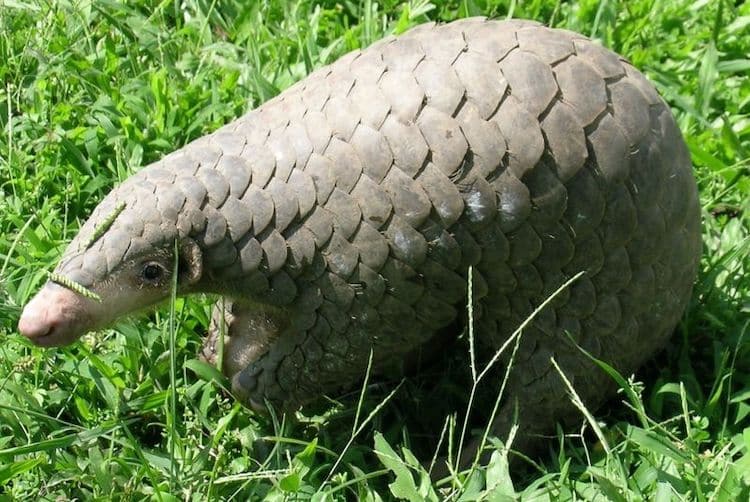
Photo: U.S. Fish and Wildlife Service Headquarters – Manis pentadactyla via Wikimedia Commons (CC BY 2.0)
Pangolins are sometimes referred to as scaly anteaters, but they actually aren't related at all. The four species of pangolins live in Asia and sub-Saharan Africa. These nocturnal animals are covered in scales made of keratin—the same substance found in fingernails and toenails. They curl up into tight balls when sleeping or in a defensive position and can either live in hollow trees or burrow into deep tunnels. Their diet consists of ants and termites and they're voracious eaters. A single pangolin can eat 5 to 7 ounces of insects a day. Unfortunately, all species of pangolin are at risk due to poaching, as they are used in traditional medicine.
Gerenuk

Photo: martinpel/123RF
The gerenuk, also known as the Waller's gazelle, is a long-necked species of antelope found in dry thorn bush scrub and desert in Eastern Africa. The word gerenuk comes from the Somali language, meaning “giraffe-necked”. Gerenuks have relatively small heads for their body, but their eyes and ears are proportionately large. Gerenuks seldom graze but browse on prickly bushes and trees, such as acacias. They can reach higher branches and twigs than other gazelles and antelope by standing erect on their rear legs and stretching their elongated necks.
Patagonian Mara
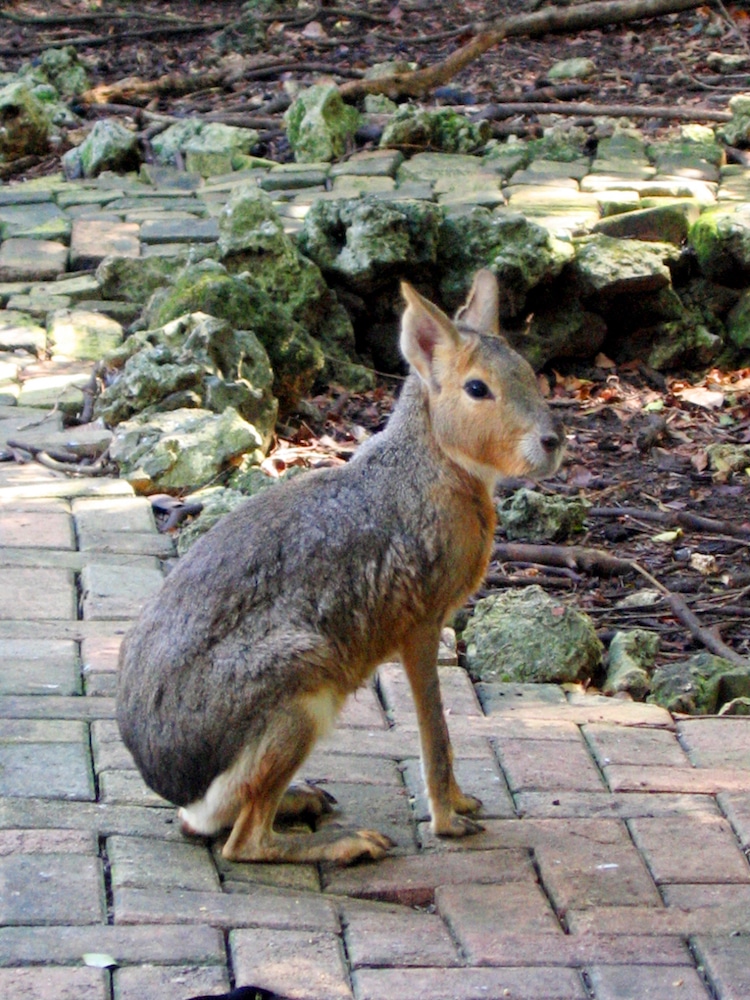
Photo: Postdlf via Wikimedia Commons (CC BY-SA 3.0)
The Patagonian Mara is a relatively large rodent found in parts of Argentina. This herbivorous, somewhat rabbit-like animal has distinctive long ears and long limbs, and its hind limbs are longer and more muscular than its forelimbs.
Aye-Aye
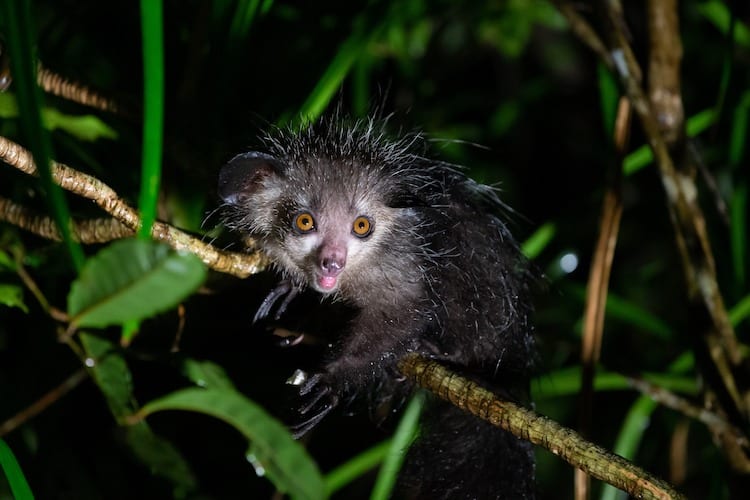
Photo: 25ehaag6/123RF
This long-fingered lemur (aka the aye-aye) is the world's largest nocturnal primate. Native to Madagascar, the aye-aye has incredible anatomy adapted to its way to forage for food. Much like a woodpecker uses its beak to extract food from within wood, the aye-aye effectively uses its long fingers and rodent-like teeth to do the same. It has a very thin third finger that it uses to tap wood in order to find grubs. It then uses its slanted teeth to gnaw a small hole in the wood. The aye-aye then uses its middle finger, which is its longest, to reach in and extract the grubs.
Snub-Nosed Monkey
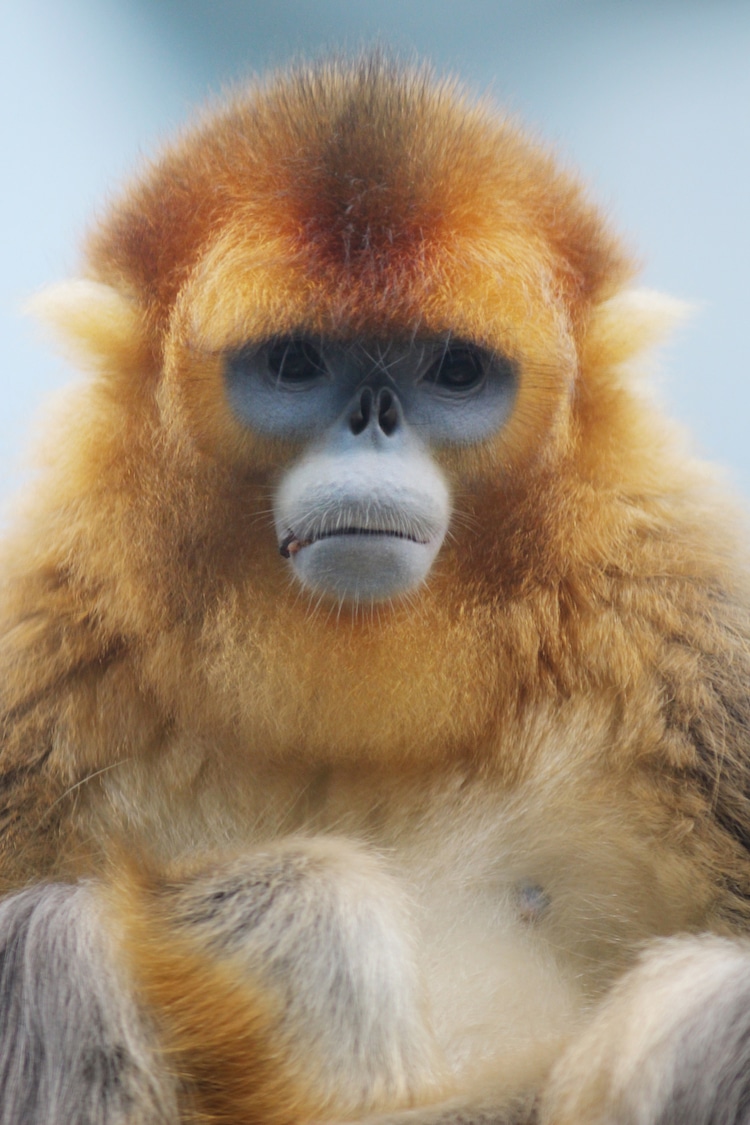
Photo: sameashk.yahoo.com.hk/Depositphotos
Snub-nosed monkeys live in various parts of Asia and get their name from the short stump of a nose on their round face. Snub-nosed monkeys inhabit mountain forests, in the winter moving into deeply secluded regions. They spend the majority of their life in the trees and live together in very large groups of up to 600 members. They have a large vocal repertoire, calling sometimes solo while at other times together in choir-like fashion.
Tufted Deer
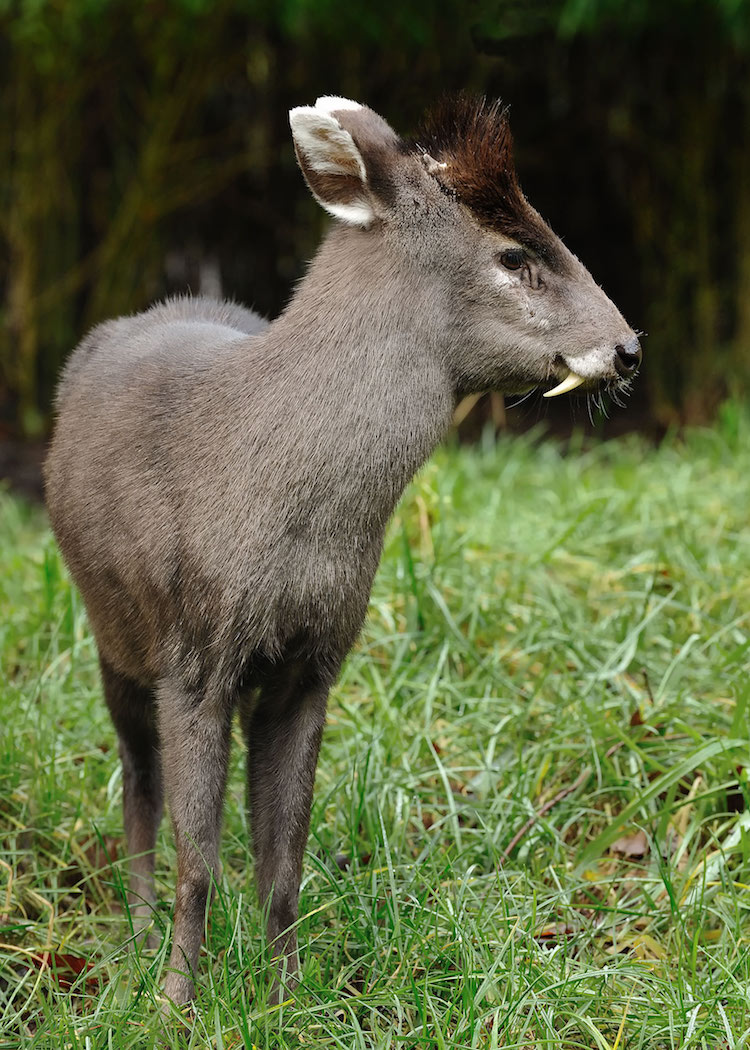
Photo: Heush via Wikimedia Commons (CC BY-SA 3.0)
The Tufted Deer is a small species of deer characterized by the prominent tuft of black hair on its forehead. It is a close relative of the muntjac, living somewhat further north over a wide area of central China. It is a timid animal, mainly solitary or found in pairs and prefers places with good cover, where it is well camouflaged.
Southern Red Muntjac
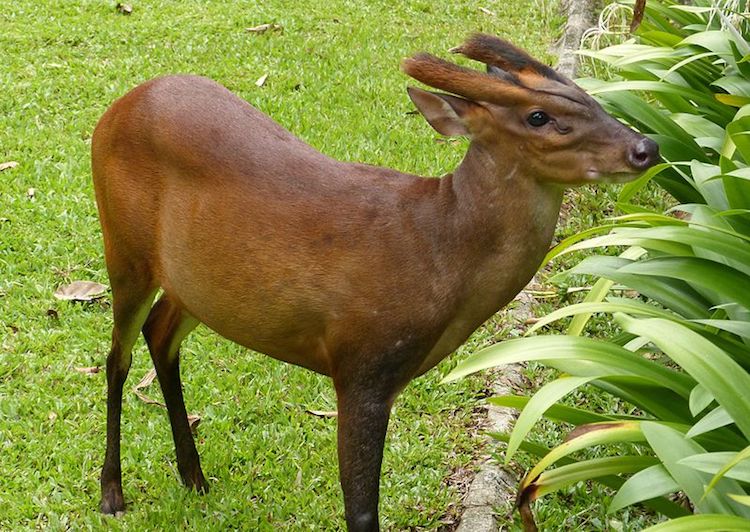
Photo: Bernard Dupont via Wikimedia Commons (CC BY 2.0)
Found in south Asia, it has soft, short, brownish or greyish hair and is omnivorous, feeding on grass, fruits, shoots, seeds, birds' eggs as well as small animals. It sometimes even displays scavenging behavior, feeding on carrion. It gives calls similar to barking, usually upon sensing a predator. Males are extremely territorial and–despite their diminutive size–can be quite fierce. They will fight each other for territory using their antlers or their tusk-like upper canine teeth, and can even defend themselves against certain predators such as dogs.
Red-Lipped Batfish

Photo: Rein Ketelaars via Wikimedia Commons (CC BY-SA 2.0)
This strange fish is found off the coast of Peru and the Galapagos Islands. Looking like its wearing lipstick, the red-lipped batfish actually isn't a strong swimmer. Instead, it has developed pectoral, pelvic, and anal fins that help it “walk” across the ocean floor.
Glass Frog
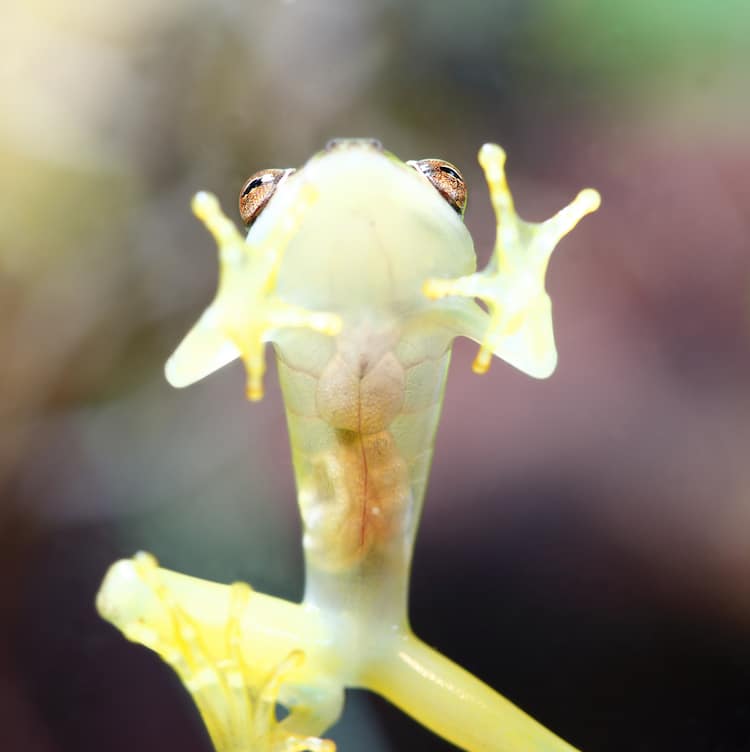
Photo: macropixel/Depositphotos
Glass frogs are amphibians that belong to the Centrolenidae family. These frogs live in trees throughout the tropics in Central and South America. What makes them unusual is that some species have translucent skin that make it possible to see their inner organs. While this might not seem like effective camouflage, they have less translucent legs that can change in brightness according to the foliage they are resting on. This makes it harder to detect their outline, thus making them less vulnerable to predators. They can also hide their red blood cells inside their livers, increasing their transparency, when vulnerable. This discovery is intriguing for medical professionals, as this would cause a large clot in most animals.
Markhor
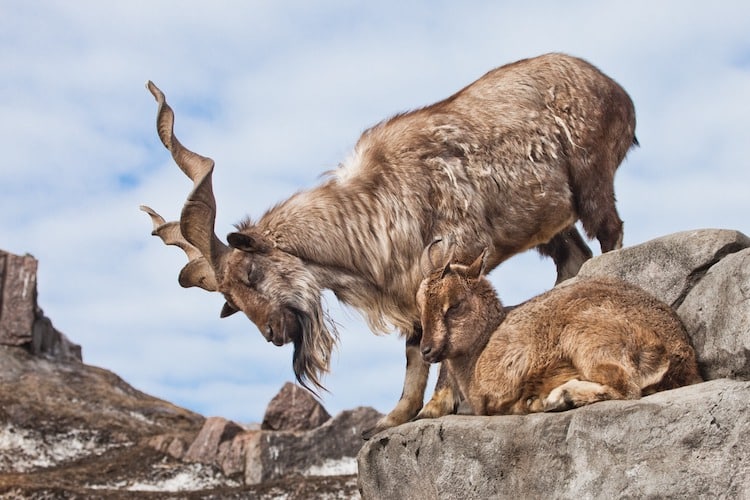
Photo: mikhail1980/123RF
The markhor is a large species of wild goat that is found in northeastern Afghanistan and Pakistan. The species is classed by the IUCN as Endangered, as there are fewer than 2,500 mature individuals. The markhor is the national animal of Pakistan. While chewing the cud, a foam-like substance comes out of its mouth which drops on the ground and dries. This foam-like substance is sought after by the local people, who believe it is useful in extracting snake poison from snake bite wounds.
Dhole
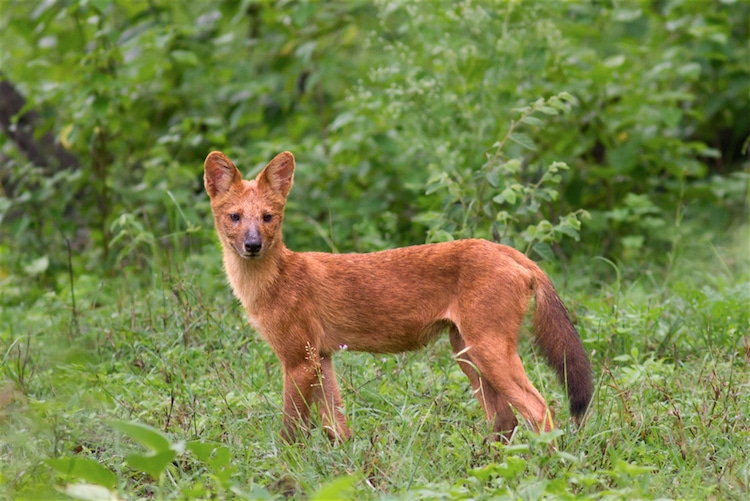
Photo: Rakeshkdogra via Wikimedia Commons (CC BY-SA 4.0)
The dhole is a species of canid native to South and Southeast Asia. The dhole is a highly social animal, living in large clans which occasionally split up into small packs to hunt. It primarily preys on medium-sized ungulates, which it hunts by tiring them out in long chases, and kills by disemboweling them. Though fearful of humans, dhole packs are bold enough to attack large and dangerous animals such as wild boar, water buffalo, and even tigers.
Irrawaddy Dolphin

Photo: chatchai/Depositphotos
The Irrawaddy dolphin is a species of oceanic dolphin found near sea coasts and in estuaries and rivers in parts of the Bay of Bengal and Southeast Asia. Genetically, the Irrawaddy dolphin is closely related to the killer whale.
Raccoon Dog
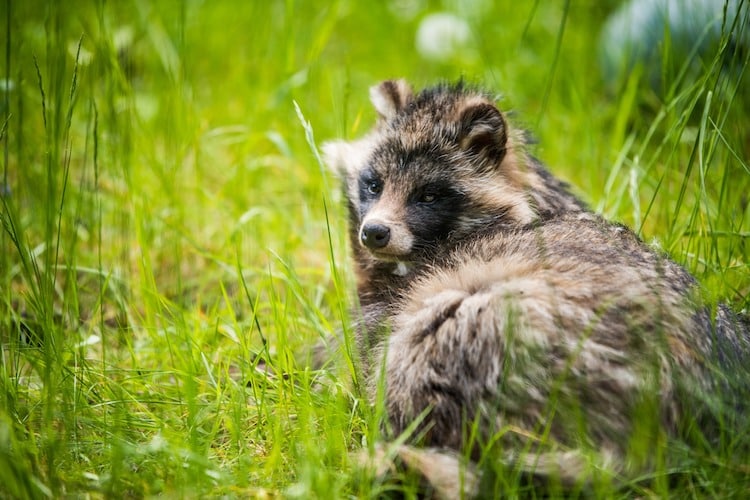
Photo: infinityyy/123RF
The Raccoon Dog, or Tanuki, is a canid indigenous to East Asia. The raccoon dog is named for its resemblance to the raccoon, to which it is not closely related. They are very good climbers and regularly climb trees. Mainly nocturnal, they groan and growl in a pitch that resembles a housecat. And, like cats, they also arch their backs when in a defensive situation.
Cyphonia Clavata
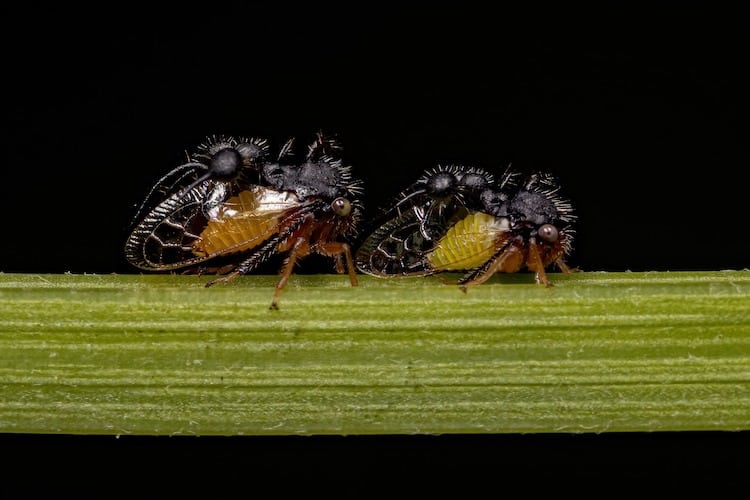
Photo: vinisouza128/123RF
The Cyphonia Clavata is a species of treehopper that has an ant-like appendage growing out of its head that hides the treehopper's actual body from predators.
Goblin Shark
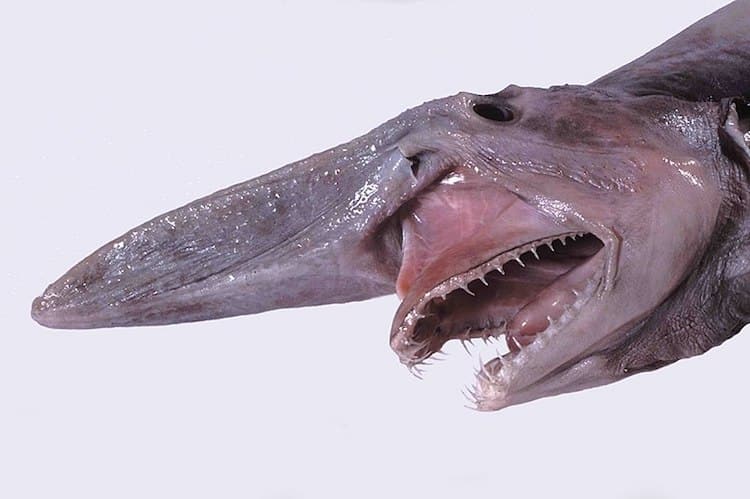
Photo: Dianne Bray / Museum Victoria via Wikimedia Commons (CC BY 3.0 AU)
Given its scary appearance, it's no surprise why the Goblin shark was given its name. This deep-sea shark is sometimes called a living fossil and is the only living member of its Family. The shark has pink skin, a long snout, and a protruding jaw filled with small, needle-like teeth. Don't worry about running into this weird marine creature, they're rarely spotted. Just a small number have unintentionally been caught by fisheries, including one measuring twenty feet long.
Sunda Colugo
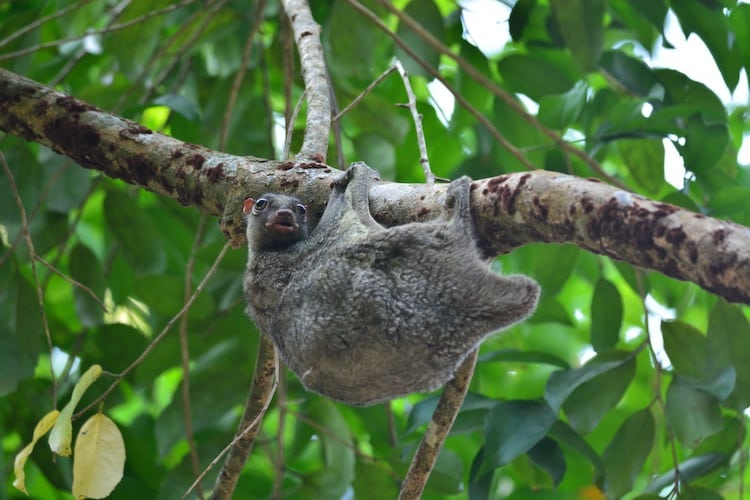
Photo: thawats/123RF
Also known as the Sunda flying lemur, it is not actually a lemur and does not fly. Instead, it glides as it leaps among trees. It is strictly arboreal, is active at night, and feeds on soft plant parts such as young leaves, shoots, flowers, and fruits. The Sunda Coluga can be found throughout Southeast Asia in Indonesia, Thailand, Malaysia, and Singapore.
Yeti Crab
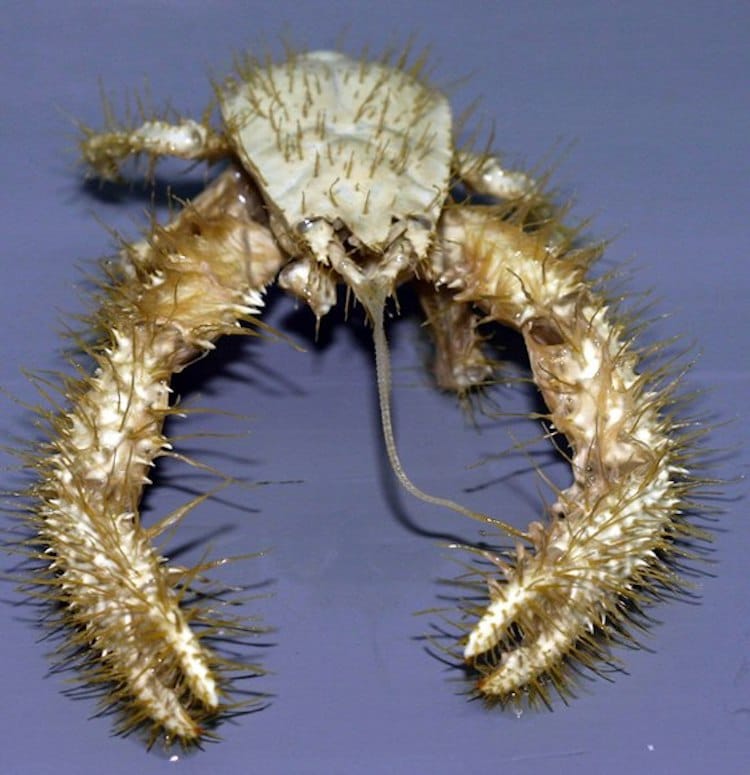
Photo: Andrew Thurber, Oregon State University via Wikimedia Commons (CC BY 2.0)
Also known as the Kiwaidae, this crab is a type of marine decapod living at deep-sea hydrothermal vents and cold seeps. The animals are commonly referred to as “yeti crabs” because of their claws and legs, which are white and appear to be furry like the mythical yeti.
Star-Nosed Mole
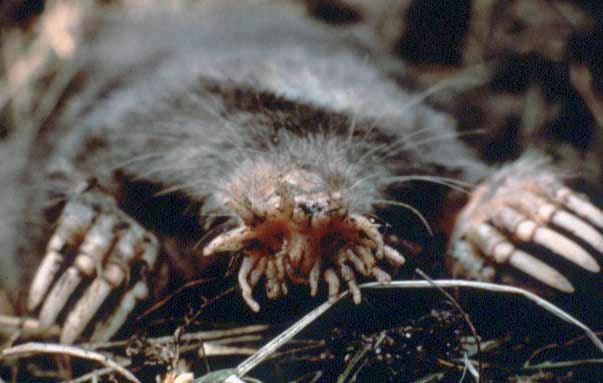
Photo: US National Parks Service via Wikimedia Commons (Public domain)
The star-nosed mole is a small mole found in wet low areas of eastern Canada and the northeastern United States. It is easily identified by the 11 pairs of pink fleshy appendages ringing its snout, which is used as a touch organ with more than 25,000 tiny sensory receptors, known as Eimer's organs, with which this hamster-sized mole feels its way around.
Lamprey

Photo: alexeykonovalenko/123RF
The lamprey is a type of jawless fish that live mostly in coastal and fresh waters whose adults are characterized by a toothed, funnel-like sucking mouth. They attach themselves to fish and suck their blood. Lampreys have been around for nearly 300 million years and their body structure has remained relatively unchanged.
Naked Mole Rat
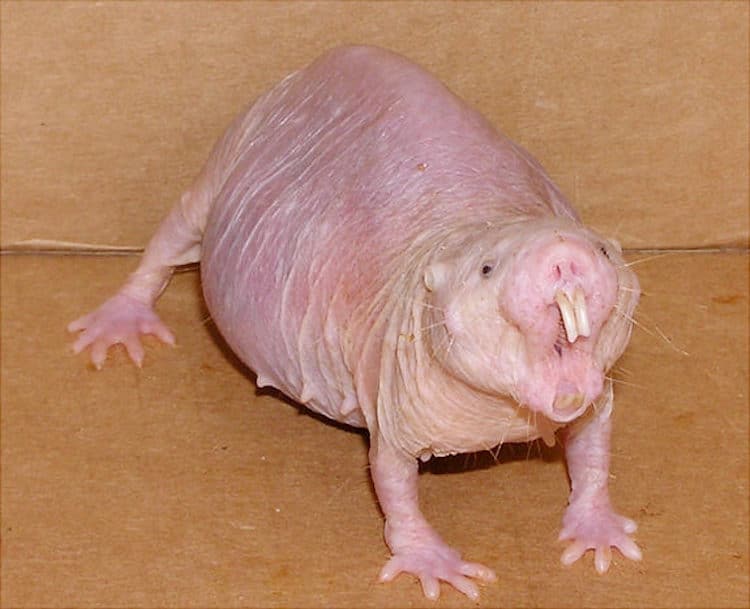
Photo: Jedimentat44 via Wikimedia Commons (CC BY 2.0)
Naked mole rats have a lot of characteristics that make them very important to human beings. For one they are resistant to cancer. They also live up to 28 years, which is unheard of in mammals of their size. The naked mole rat seemingly does not age much in those 28 years either. It remains “young, healthy and fully fertile for almost all its days, which for an elderly animal is equivalent to an 80-year-old woman having the biological make-up of someone 50 years younger.” The naked mole rat is used in both cancer research and the study of aging. Not only making it a bizarre creature but an incredibly important creature as well.
This article has been edited and updated.
Related Articles:
15 Celebrity-Named Animals You Never Knew Existed
Photographer Spots the World’s Only Pink Manta Ray in Australia
Rare Sighting of a “Blue Dragon” Spotted on the Shores of Australia
Russian Fisherman Continues to Catch the Weirdest Deep Sea Creatures in the Ocean
This Website Lets You to Scroll to the Bottom of the Ocean and Discover Deep Sea Animal Lif
